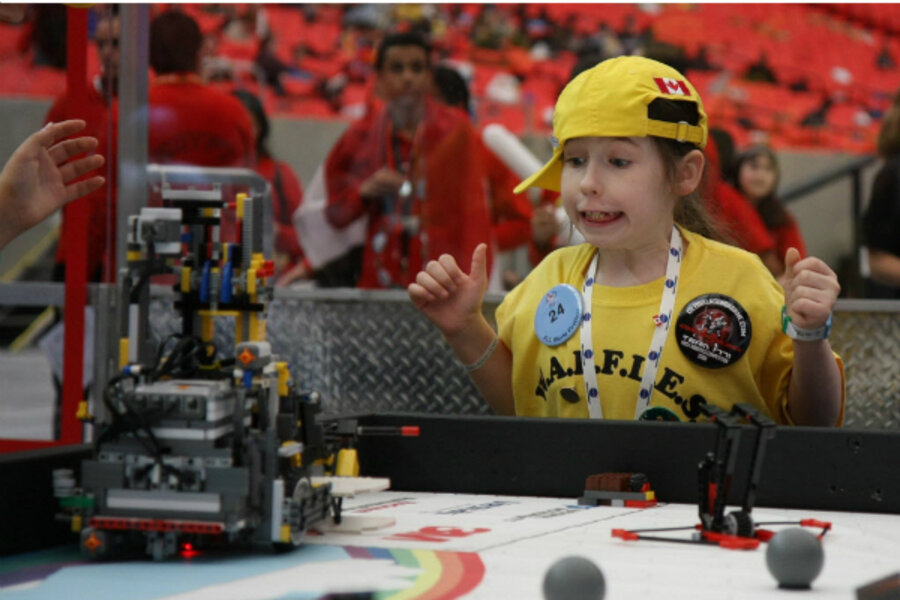LEGO for girls: Move over Barbie
Loading...
LEGO, the maker of the famous children's building toys, has gone pink during the last 14 months, changing the sex of its figures from all male to female in some sets, gender-typed further with a “dream house” and was rewarded with a 25 percent boost in sales. All that is annoying to those fighting against gender typing, but what many don't realize is that the toys may help girls get past body image issues and focus on seeing themselves in typically male-dominated roles in science, technology, engineering, and math, known as the STEM fields.
While it's true that the toy manufacturer has played to the gender-typing via color and an initial offering of LEGO Friends sets that included Barbie-like scenarios like a beauty parlor, the LEGOs in the pink and purple boxes also offer options for girls to imagine themselves in the roles of scientist, teacher, and veterinarian.
I agree it's pretty minimal, but change has to start somewhere and LEGO is taking kids in a different direction that can, if encouraged by consumers, make our children focus on critical thinking instead of being “Pretty in Pink.”
Not having a daughter myself – mom of four boys here – I fully expected Nicole Newsome executive director of The Geekettes Club, to dislike the LEGOs for their stereotypical pink and beauty shop themes, but she loves them. She has a 10-year-old son, Vance, and a 7-year-old daughter, Kinzee.
“My daughter has them and loves them because they're finally hers, and I love them because finally she's reaching for a scientist in a lab coat and not Barbie in a bikini with a disfigured body image,” Ms. Newsome, of Norfolk, Va. said this morning.
Indeed, LEGO has inadvertently leveled the playing field of body types, leaving girls free to be “Imagineers” who concentrate on building dreams of being grown-up Geekettes instead of imagining ways to reengineer their bodies to fit an impossible image. LEGOs body shapes are more realistically proportioned and less revealing. Compared to a Barbie, they’re universes apart.
RECOMMENDED: Are you a helicopter parent? Take our quiz.
The Geekettes Club was founded in 2009 by Sonya Schweitzer to provide a safe and nurturing learning environment in which members help women and girls engage in educational and professional opportunities.
According to The Associated Press, LEGO, the new girl-focused product released in January 2012 has helped sales of the Denmark-based company increase 25 percent. The privately owned company generaed $4.2 billion in revenue last yea, and much of that was due to a simple gender flip for the toys.








